13 National Parks Worth Visiting
FROM POPULAR TO OFF-THE-BEATEN-PATH


Even as traveling internationally rebounds, more Americans are planning road trips to explore the natural wonders within their own backyards. There are dozens of stunning, Instagram-worthy places to visit right here within the U.S., including national parks, which are expected to be a hot vacation destination for years to come. With so many across the country boasting beautiful scenery, it’s obvious why. Here’s a list of our favorite national park attractions that are a must for travelers, ranging from popular to off-the-beaten path.
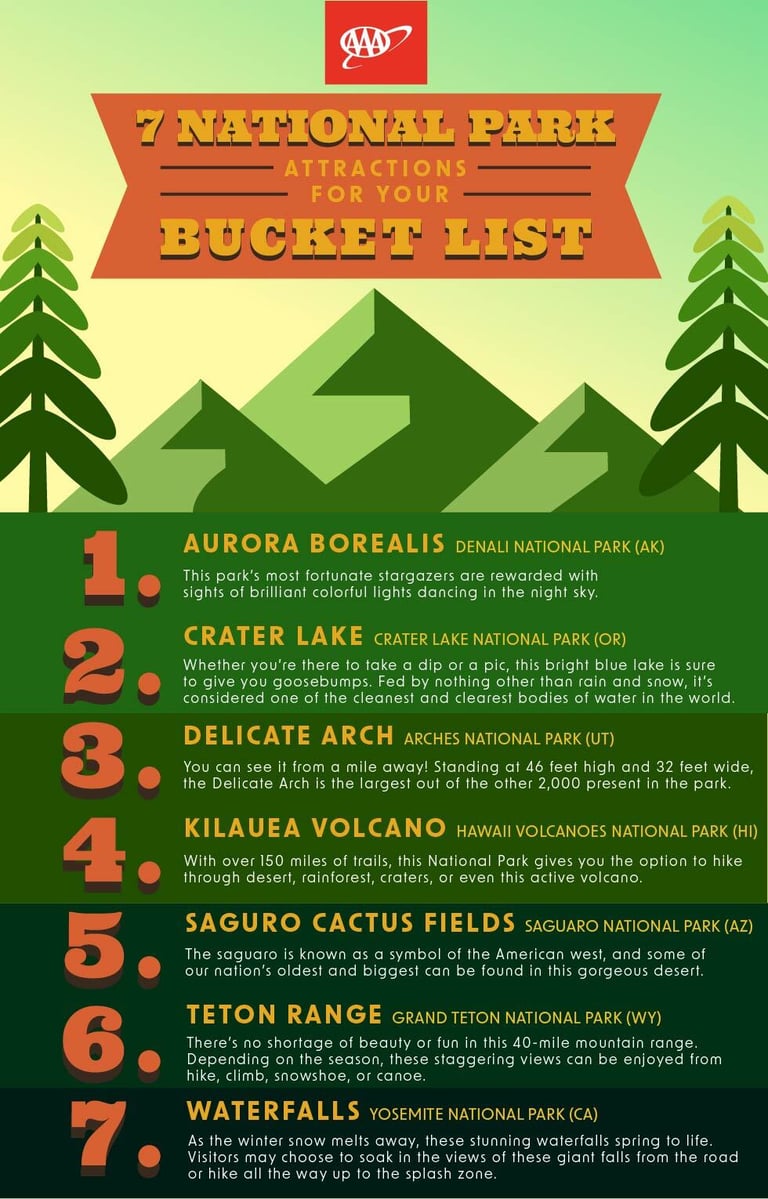
Angel’s Landing, Zion National Park
This 1,488-foot-tall rock formation is one of the most popular destinations for adventure and photography in Zion National Park. The 5.4-mile, round-trip hike is strenuous, and takes about four hours to complete, with the trail cut into solid rock and leading to the top of the peak. But once you get there, you’ll find panoramic views of Zion Canyon’s 270-million-year-old rock layers. Be sure to get your permit to hike if you visit after April 1, 2022.
Aurora Borealis, Denali National Park
While hard to predict, the aurora is a breathtaking natural phenomenon that occurs year-round. If there is enough darkness and the sky is clear enough, you’ll see brilliant flashes of green, red, blue, and purple throughout the sky. Formed when a massive burst of solar wind and magnetic fields interact with elements in the earth’s atmosphere, the lights appear to dance while moving with the atmospheric currents. Even if you don’t get to see the lights, Denali is still a fabulous place for stargazing. You may even be able to see the Milky Way.

Crater Lake, Crater Lake National Park
Formed nearly 8,000 years ago when a volcano eruption triggered the collapse of a tall peak, Crater Lake is the deepest lake in the U.S. The bright blue water and stunning views of the Cascade Mountain Range have photographers and sightseers flocking to see its beauty. Fed entirely by rain and snow, it’s considered to be one of the cleanest and clearest large body of water in the world. Beyond the lake, find other volcanic features and lush forests full of wildlife.

Delicate Arch, Arches National Park
Arches National Park has more than 2,000 stone arches, though the Delicate Arch is one of the most famous in the world. At 46 feet high and 32 feet wide, it’s the largest free-standing arch in the park. View the arch from the Lower Delicate Arch Viewpoint, where you can see it from one mile away. The Upper Viewpoint offers a slightly better view, and the trail to see the arch up close is about a 3-mile, round-trip hike.

Dream Lake, Rocky Mountain National Park
Begin at the Bear Lake trailhead for a 2.2-mile, round-trip hike to one of the most popular destinations in Rocky Mountain National Park. On your way, you’ll find Nymph Lake, as well as stunning mountain views and wildlife. If you make your way first thing in the morning, the light from the east illuminates the stone face and Hallett Peak in the background, with the lake mirroring its surroundings on the surface—fantastic for photos.
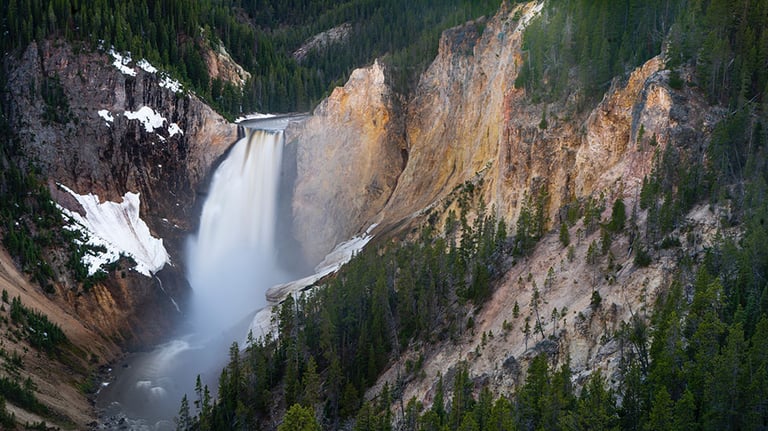
Grand Canyon of Yellowstone, Yellowstone National Park
Regardless of the time of day or season you visit, the beauty of the Grand Canyon of Yellowstone is impressive. The complete trail is about 20 miles, though numerous trails and walkways wind along the rims and even partway into the canyon. Formed more than 630,000 years ago by a volcanic eruption and now carved by the Yellowstone River, each trail shows you different views of the canyon’s color, geology, and wildlife.
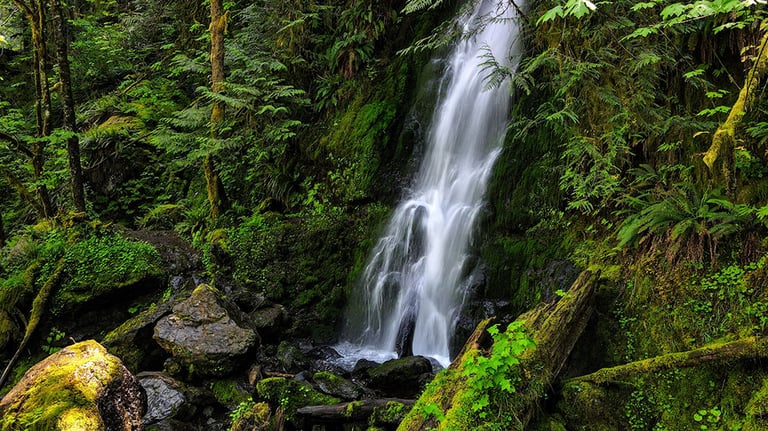
Hoh River Rainforest, Olympic National Park
Flowing from Mount Olympus toward the Pacific Coast, the word “hoh” is believed to mean “fast moving water” or “snow water” since the river is formed from glacial runoff. Throughout the winter season, rainfall averages about 140 inches, allowing for lush, green trees, plants, mosses, and ferns to blanket every surface and add to the feeling of enchantment. The area offers three trails, ranging from 0.8 miles to 18.5 miles, perfect for hikers regardless of experience.
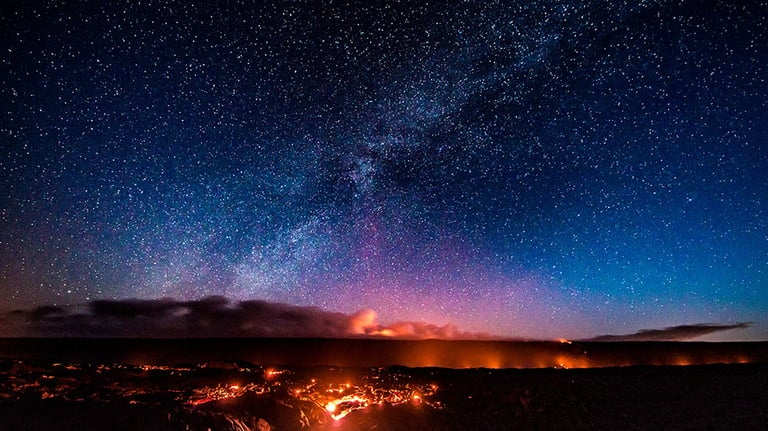
Kilauea Volcano, Hawaii Volcanoes National Park
Extending 13,677 feet from sea level, Kilauea is one of the world’s most active volcanoes and last erupted in 2018. The park itself encompasses more than 335,000 acres (or 523 square miles) and hosts more than 150 miles of hiking trails, taking you through volcanic craters, deserts and rainforests, petroglyphs, and the volcanoes. Stop by the Visitor Center to plan a day hike or other ranger-guided activities.
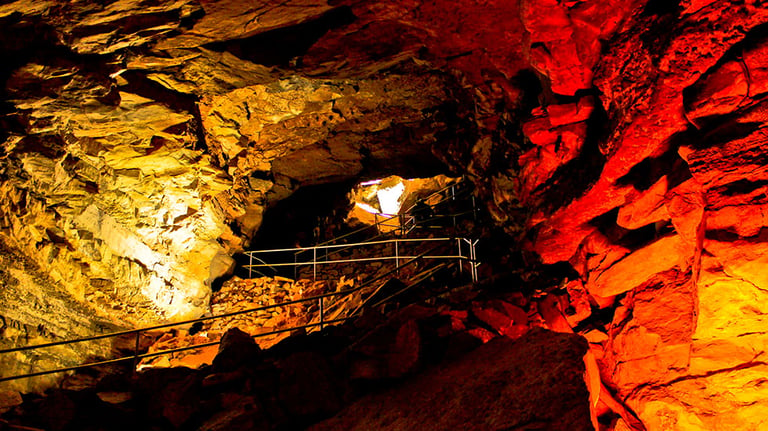
Mammoth Cave, Mammoth Cave National Park
The world’s longest known cave system, Mammoth Cave National Park, is home to thousands of years of history, diverse plants and animals, hills, river valleys, and breathtaking scenery. Mammoth Cave tours are for visitors of all ages, with short and long walking paths, lantern tours, and even crawling tours throughout the 420 miles of surveyed passageways. New discoveries and connections add miles to the cave system each year, so each visit could be a new adventure. The park itself takes up 52,830 acres and offers hiking, biking, and canoeing adventures.

Saguaro Cactus Fields, Saguaro National Park
The giant saguaro is the nation’s largest cacti and is only found in a small portion of the U.S. Known as an icon of the American West, they can grow up to 40 feet tall, though they grow extremely slowly—it can take 10 years for a saguaro cactus to reach a height of one inch. Some of the cacti in the Saguaro Cactus Fields are 100-200 years old or older, and they each grow differently, making this a fun place to visit and explore. Surrounded by outstanding dessert, taking photos in these fields should be on your bucket list.

Teton Range, Teton National Park
With more than 200 miles of trails to explore in Teton National Park, you won’t have a dull moment. Passing by gorgeous lakes, through mountain terrain, and other scenery full of wildlife, the Teton Range extends for about 40 miles through the state. A popular destination for climbers, the mountains are easily accessible by road and offer trails to the summits of most peaks. If you’re feeling bold, become one of the 4,000 climbers who each year attempt to summit Grand Teton, a 3,000-foot vertical ascent. Otherwise, enjoy hiking, snowshoeing, skiing, and other outdoor recreation.
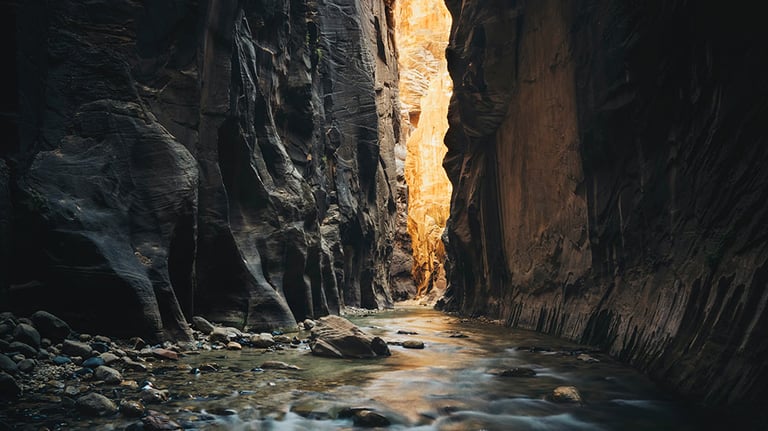
The Narrows, Zion National Park
This path is the narrowest section of Zion Canyon, with walls thousands of feet tall. Over the centuries, the walls of sandstone have been sculpted into some of the most beautiful and breathtaking rock formations in the U.S. There is no trail to get to The Narrows, so be prepared to get your feet wet in the Virgin River! Or you can see The Narrows by hiking along the paved Riverside Walk.

Any waterfall, Yosemite National Park
Yosemite National Park in the spring, when most of the snowmelt occurs, is the best time to visit to view the waterfalls throughout the park. If you can’t make it then, don’t worry, since storms in late fall rejuvenate some of the falls. Yosemite Falls, one of the most popular, reaches nearly 2,500 feet tall and is actually made of three separate falls. Others include Sentinel Falls, Ribbon Falls, Horsetail Falls, Bridal Veil Falls, Nevada Falls, Vernal Falls, Wapama Falls, Chilnualna Falls, and others. While you can view many of these falls from the road, most also offer hiking trails to give you an up-close and personal view.
